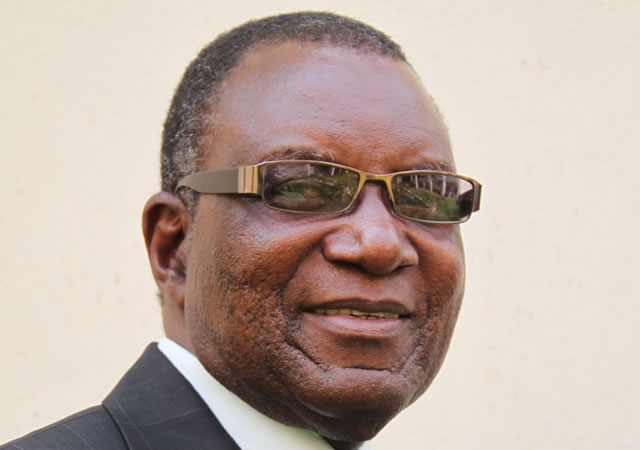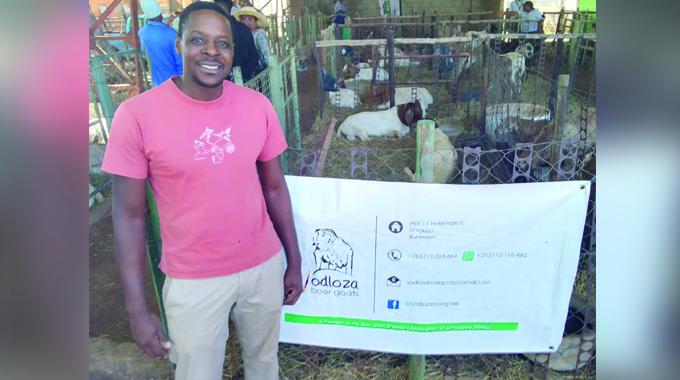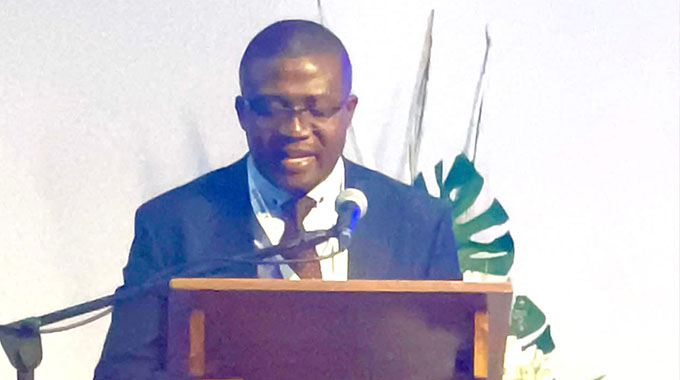Intellectual property protection for enterprises and SMEs

Aleck Ncube
AS mentioned earlier, Intellectual Property (IP) is broadly divided into two categories — Industrial Property and Copyright. Industrial Property covers inventions (patents), utility models, industrial designs, geographical indicators, trademarks and trade secrets. The second category (Copyright and its Related Rights) covers literary and artistic works such as novels, poems and plays, films, musical works and artistic works that include drawings, paintings, photographs, sculptures; and architectural designs.
Whenever a new product is successful on the market, it is very likely that competitors will attempt to make similar or identical products. The innovator will probably have invested significantly in developing the new product, establishing the supply chain for production, running marketing campaigns and finding distributors. Competitors benefit from these efforts. They have greater market access, a better connection with distributors, and access to cheaper primary resources. As a result they are able to offer their products at a cheaper price.
Innovators are then under heavy pressure and may be driven out of business, while competitors get a free ride on the back of their creativity. The IP system is there to help innovators protect their inventions, designs, brands, artistic works, and so on. It provides them with ownership over their work and the rights to exclude competitors from the production, import or sale of infringing goods. Here are some examples of valuable intellectual property.
According to market research companies, the Coca-Cola brand — and its trade mark — is worth around US$78.4 billion. More than 100 million units of the Apple iPod touch music player were sold between its launch to date. The iPod is protected by Trade-marks, registered designs and patents for the user interface. Harry Potter author JK Rowling converted her imagination into the equivalent of 22 000kg of gold — true IP magic! She earned US$910 million —approximately one billion dollars — from her copyright. The Harry Potter brand has been estimated to be worth US$15 billion.
In 1991, Kodak had to pay US$925 million to Polaroid for having illegally used Polaroid’s patented inventions for instant cameras. In 1991, biotech company Cetus Corporation sold the rights to the PCR patents for the DNA copying process to Hoffman-La Roche for US$300 million. Kary Mullis, who developed the PCR, was awarded the Nobel Prize in Chemistry in 1993.
Patents
Patents are granted for technical inventions. Applications for patents are examined by the patent office they are filed with the Zimbabwe Intellectual Property Office (ZIPO), in order to determine whether they meet the stringent requirements for a patent to be granted.
Patents generally last for a maximum of 20 years from the date of filing. At the regional level, the African Regional Intellectual Property Organisation (ARIPO) handles the registration of patents for its member states using the Harare Protocol on Patents and Industrial Designs. For the international registration of patents, the World Intellectual Property Organisation (WIPO) administers the process under the Patent Cooperation Treaty.
A patent is sometimes considered as a contract between the applicant and society. Applicants and patent owners are interested in benefiting — personally — from their inventions. They have the right to prevent others from making, using, offering for sale, selling or importing a product that infringes their patent, for a limited amount of time and in the country for which the patent has been granted.
The exception to this is use for non-commercial purposes, for example academic research. Society is interested in: encouraging innovation so that better products can be made and better production methods can be used for the benefit of all, protecting new innovative companies so that they can compete with large established companies, in order to maintain a competitive economy, learning the details of new inventions so that other engineers and scientists can further improve them, and promoting technology transfer, for example from universities to industry. In return for this protection, the applicant has to reveal his invention to the public, so others can build on it. As a rule, patent offices publish applications after 18 months. At this stage they become visible to everyone. This “social contract” is institutionalised in the form of patent law.
Utility Models
Utility models offer simpler protection, for a shorter period of time, but are usually registered and published much more quickly than patents. Utility models are intellectual property rights that protect technical inventions, just like patents. In contrast to patents, however, utility models are available in some countries — for example Austria, China, Germany and Japan — but not in others — for example Zimbabwe. For Zimbabweans, the only route available for them to obtain Utility Model protection is to apply through the African Regional Intellectual Property Organisation (ARIPO), based in Harare, Zimbabwe.
Generally speaking, applications for utility models must be filed in the country where the applicant is seeking protection for their invention. Depending on the law in the country concerned, utility models offer protection for up to a maximum of 10 years. This contrasts with patents, which offer 20 years of protection. In most countries, utility models are registered without examination, within a few months of filing the application. They can be either in addition to or an alternative to a patent.
In general, utility models are registered without substantive examination as to novelty, inventiveness or industrial applicability. The validity of utility models with respect to novelty and inventive step is only reviewed in revocation or infringement proceedings. The financial advantage of utility models is often mentioned. However, while a single utility model is definitely cheaper than a plurality of patent applications, centrally filing one patent application for many countries is far less complex than filing a plurality of utility models in different countries with different languages. The biggest advantage of filing a utility model is often the speed with which it is registered.
Industrial Designs
Industrial design refers to that aspect of a useful article, which is ornamental or aesthetic made by hand, tool or machine. Designs make a product attractive and appealing; hence, they add to the commercial value of a product and increase its marketability. Registered designs protect the external appearance of a product. They do not give any protection for technical aspects. They include new patterns, ornaments and shapes. To be officially registered, designs need to be original and distinctive.
The artistic aspects of a design may also be protected by copyright. A design is the outward appearance of the whole or parts of a product.
A product can be any industrial or handicraft item. Examples of design features include lines, colours and shapes. Examples of the products to which they are applied or in which they are incorporated include packaging and logos. There are two requirements for protection.
The first is novelty. The design must be new. In other words, no other identical design has been made available to the public. The second is that the design must have individual character. This requirement is not met if another design, which creates the same overall impression on the informed user, has already been disclosed.
Some designs are excluded from protection by law because they run counter to public order and morality. Unregistered designs also enjoy some protection. An unregistered design is a free, automatic right that you get when you present a design to the public. It gives you the right to stop anyone from copying your design. The protection afforded by an unregistered design is normally of more limited duration than that available for a registered design.
Design protection has two forms: registered and unregistered. It is possible to register designs at national level that is ZIPO, international level that is at WIPO and regional level that is ARIPO. The international registration of designs is run by WIPO in accordance with the Paris Convention, which stipulates that industrial design protection is limited to the country where protection is sought. The Hague agreement concerning the International Deposit of Industrial Design helps to facilitate this process. Registration for the whole of the ARIPO is done under the Harare Protocol, where applicants can obtain a Registered Community Design.
Design rights are exclusive rights. Their scope of protection is broad and includes designs, which do not produce a different overall impression on the informed user.
Use of those designs can be prevented. Design protection is limited to the territory in which the design is registered. It varies from country to country. Industrial Design protection is usually five years with the possibility of renewal, which may total, in most countries, up to a maximum of 15 to 25 years.
The Agreement on Trade-Related Aspects of Intellectual Property Rights (TRIPS Agreement 1994), provides for protection of a minimum of 10 years while under the Harare Protocol it is 10 years.
Geographical Indicators
Geographical indications identify a good as originating in the territory of a country or a region or locality in that territory, where a given quality, reputation or other characteristic of the good is essentially attributable to its geographical origin. Geographical Indications consist of the name of the place of origin of the goods, link a product to a particular region, indicate qualities, attributes, reputation associated with geographic origin, suggest connection to region’s inherent characteristics such as soil, climate and may also imply production skills/processes associated with region.
At international level a definition of what is meant by the term “Geographical Indication” is provided by the Agreement on Trade-Related Aspects of Intellectual Property (TRIPS Agreement 1994) under the World Trade Organisation (WTO). The Agreement also obliges the member states to take action and provide legal protection against any kind of use of geographical indications, which may mislead the public as to the geographical origin of the goods concerned.
Aleck Ncube is an Intellectual Property scholar. He can be contacted on [email protected] or Follow me on Twitter: @aleckncube











Comments